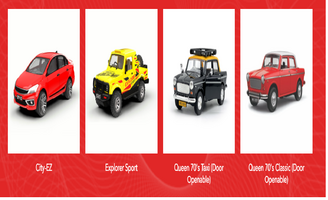Toys are objects designed primarily for play and entertainment. They are often used by children, but many toys are enjoyed by people of all ages. Toys are made from a variety of materials, including plastic, wood, metal, fabric, and more, and they come in countless shapes and sizes. They can serve educational purposes, help develop motor skills, stimulate creativity, and encourage social interaction.
Here are some categories of toys:
1. Educational Toys:
These toys are designed to enhance a child's learning in areas like language development, math, science, and problem-solving. Examples include puzzles, building blocks (like LEGO), and STEM kits.
2. Action Figures and Dolls:
Action figures represent characters, often from movies, cartoons, or comics. Dolls are generally designed to represent human figures, allowing children to engage in imaginative role play. Examples include Barbie dolls and superhero figures.
3. Board Games and Card Games:
These types of toys are designed to bring people together for interactive fun. They often involve strategy, teamwork, and learning new skills. Classic examples include Monopoly, Scrabble, or Uno.
4. Stuffed Animals and Plush Toys:
Soft, cuddly toys that resemble animals or other characters. These are popular for comfort, companionship, or imaginative play. Teddy bears are a classic example of this category.
5. Building Toys:
These are toys that encourage creativity and construction skills. Popular examples include building blocks like LEGO, K'NEX, and Mega Bloks. They allow children to create structures, vehicles, or characters.
6. Outdoor and Sports Toys:
Toys that encourage physical activity, such as bicycles, skateboards, jump ropes, or sports equipment like soccer balls and frisbees. These promote outdoor play and fitness.
7. Vehicles:
Toy cars, trucks, trains, and airplanes fall under this category. They range from simple push toys to intricate, remote-controlled models. These toys often stimulate imaginative play and can teach children about transportation.
8. Musical Toys:
Instruments like toy pianos, drums, xylophones, and guitars that allow children to create music and develop their sense of rhythm and sound.
9. Interactive/Tech Toys:
With the advancement of technology, many modern toys incorporate digital components. These can include robots, virtual pets (like Furby), and toys that connect to apps or have augmented reality features.
10. Creative and Craft Toys:
These toys encourage artistic expression, including art supplies (crayons, paints), clay, jewelry-making kits, and other craft materials. They help children develop fine motor skills and creativity.
11. Pretend Play Toys:
Toys that allow children to engage in imaginative role-playing. These include kitchen sets, doctor kits, tool sets, and more. They help develop social and communication skills.
12. Collectible Toys:
Many toys are designed to be collected. These include action figures, trading cards, and mini figurines. Some brands release limited edition items to make them more desirable for collectors.
Purpose and Benefits of Toys:
- Cognitive Development: Many toys, especially educational ones, help children learn about numbers, letters, shapes, colors, and basic problem-solving skills.
- Motor Skills: Toys that involve building, drawing, or interacting with buttons and levers help children develop fine and gross motor skills.
- Social Skills: Board games, dolls, and pretend play toys encourage teamwork, sharing, and communication.
- Creativity and Imagination: Toys that let children use their imagination, such as action figures or building blocks, can help foster creativity.
- Emotional Development: Soft toys, such as stuffed animals, often offer comfort to children and can help them deal with emotions.
Toys play an essential role in a child's development and provide fun while enhancing learning and skill-building


